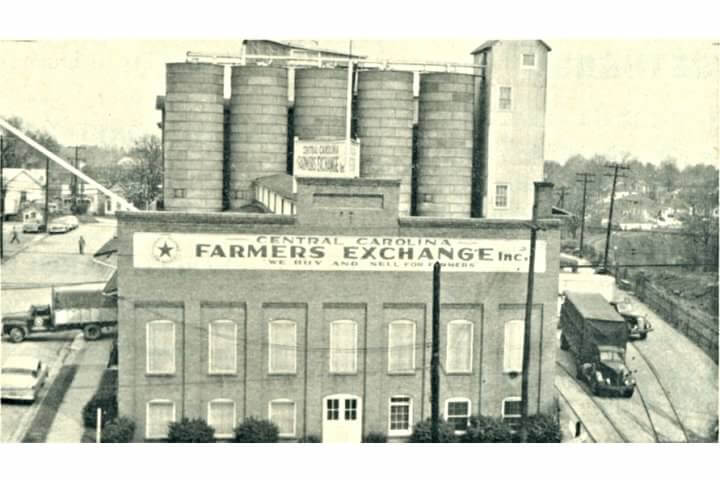As Black History Month is coming to a close, we wanted to share the history behind The Durham Exchange’s building.
In 1917, this building began with the name the Paragon Hosiery Mill. It quickly changed names to the Bowling-Emory Knitting Mill, before coming into the ownership of industrialist Julian S. Carr. The early twentieth century was the height of the cotton production era, and 801 Gilbert Street became part of the ever-expanding Durham Hosiery Mill campus.

Cotton gave way to silk; the mill gave way to something new: The Farmer’s Exchange. Durham’s first Farmer’s Market found its home here in the 1930s. This Farmer’s Market was operated exclusively by women. The Farmer’s Exchange was a center of entrepreneurship, provision, and community growth.
From the 1950s to the 1980’s the building remained a significant site of commerce in Durham, NC. It was abandoned for several years until, until 2007.

In 2007, entrepreneur, Wendy K. Clark, restored it to its former beauty. Wendy named the building The John O’Daniel Exchange in honor of John O’Daniel who was known as Julian S. Carr’s “right-hand man,” servant, and later, trusted mill manager. John O’Daniel was also the first African American landowner in Durham.

This transformed a piece of Durham history into a place of hope and celebration, a place to exchange of vows and ideas. 801 Gilbert Street currently houses nonprofits, serves minority businesses, and exists to impact systemic poverty. So, the building once again provides for and serves its community.
Learn more about the history of The John O’Daniel Exchange today.






